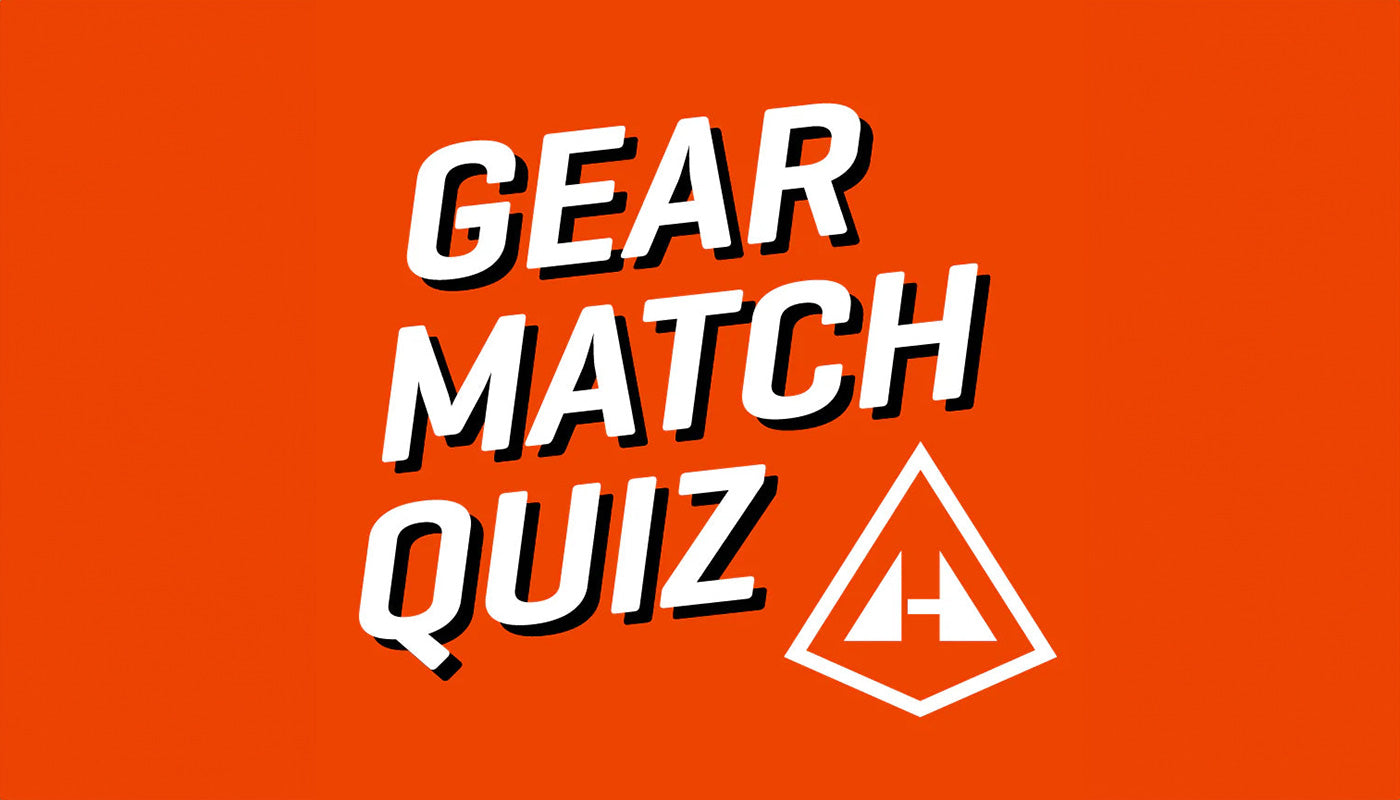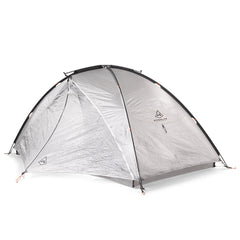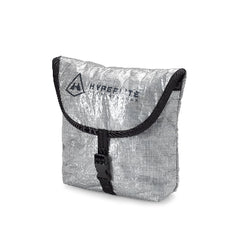Words and Photos by Jenner Haseltine @jennerhaseltine
To the hiker trash it may concern–My name is Jenner, and I’ll be starting the Colorado Trail in Denver on August 12, 2024. Like everyone else in Denver, I transplanted there five years ago from my hometown in Vermont and have been eying up the CT ever since. My good friend Cody was gracious enough to invite me to Thanksgiving dinner last November and dropped the bombshell that he’d be hiking the CT as I leaned back in true hiker fashion with my belt unbuckled and hands clasped behind my head.
I committed on the spot. We are planning for roughly six weeks and one zero each week. Being that my prior thru hike was the Appalachian Trail in 2022, the differences in elevation, sporadic weather patterns, and frequent exposure in Colorado have caused me to rethink some elements of my AT gear list over the last six months. With just under a month until our start date, my loadout finally feels dialed after many shakedowns and much procrastination. Without further ado I relinquish my lighterpack to the scrutiny of the weight weenies.
Let me address the first potential point of contention right away. Yes, I ordered the Unbound 40 in Black. Yes, it is over two ounces heavier than the same pack in white. I believe the added weight is a small price to pay for the additional durability and weatherproofing of 150-denier DCH over the 50-denier. Also, it looks SO CLEAN in black. I used a Windrider 2400, now Windrider 40, for the duration of the AT that I absolutely adored. However, the Unbound includes the few updates I wanted to make while still retaining the same bomber construction.
Perhaps most notable of these is the stretch mesh. No more tearing holes in my side pockets as I clumsily scrape my pack along every spike from a broken-off tree branch at the end of a 25-mile day. The back pocket will no longer expand so much from containing my sopping wet tent that I eventually have to check behind me to ensure I’ll still have a shelter for the night. The bottom pouch is also a super handy addition, as well as the ability to cinch each pocket tight. I may even make it the whole trail without losing the top to one of my bladders and soaking myself every time I bend over to tie my shoes!
One new piece of clothing I will be carrying is the OR Foray rain pants. After much waffling over their seemingly excessive 10-ounce weight, I’ve decided to take a chance on them. I had a pair of one-ounce Copperfield wind pants from Enlightened on the AT that my hiking partner called “trash pants” because they were indistinguishable from a trash bag fashioned to have two legs. They ended up being useless, with the exception of laundry day. We hiked through heavy rain our fair share over five months on the AT, sometimes all day, and I found that my shorts would usually dry before bed or certainly by morning. Being that it was so hot and humid, hiking in the rain was usually refreshing. Sometimes, I wouldn’t even bother with a raincoat. However, I have experienced enough afternoon storms up high in Colorado to feel somewhat justified in my decision to carry legit Gore-Tex pants.

A frosty morning in North Carolina featuring the Windrider 40 and the Enlightened Equipment Torrid puffy.
I’ve also swapped my MSR Pocket Rocket stove for a Deluxe because of the built-in regulator. Now I won’t have to worry about excessively burning fuel at higher elevations and in windy conditions while exposed.
I will be trying out the Ursack All Mitey for food storage in favor of my old Sea to Summit stuff sack, rock sack, and 30 feet of waxed paracord. The Ursack was initially a tough sell, weighing in at a whopping 13 ounces and taking up an uncomfortable amount of space in my pack by itself. It was actually one of the deciding factors for rocking the Unbound 40 over the Waypoint 35. The obvious advantage of the Ursack is not having to rig a bear hang every night, though it can be entertaining to watch what should be a straightforward process turn into a spirited game of cats in the cradle with one poor throw of the rock sack. One can typically find a decent tree for hanging back east, but I know from experience that finding a good spot to hang in Colorado is often nearly impossible due to a majority of bushy conifers or no trees being tall enough around any given campsite. The All Mitey is heavier than the Ursack major by five ounces. However, I am personally more concerned with rodents than bears and figured I might as well get the most rugged edition.
Lastly, I am trading out my Western Mountaineering Apache 15-degree for an Enlightened Equipment Revelation 20-degree quilt. I generally do prefer the comfort of a mummy bag over a quilt but I got a killer deal on mine and figure the 10 ounces of weight savings will roughly cancel out the Ursack. I’ve spent one night in the quilt so far when the temperature dropped below freezing and was still impressively toasty given its lightweight construction.
While on the topic of sleeping bags, I want to bring up an issue surrounding the backpacking community–I’m looking at you r/ultralight–that is near and dear to my heart. For the duration of the AT, I used an older EMS 20-degree bag that weighed two pounds and five ounces. It served its purpose well, and I had no complaints. This is one of many essential gear items that I’ve been fortunate enough to have upgraded since working in the outdoor industry and having access to pro-forms. In speaking with a few friends who are planning their AT thru this coming April, I have tried to answer many questions about what gear is best and if it is “worth it” to go the extra monetary mile. At the end of the day, I am a firm believer that one will adjust to whatever weight is on their back comfortably so long as they start slow and listen to their body. The price of gear should not be a primary obstacle to outdoor accessibility.
I spent roughly $6,000 on the AT and plan to spend at least $2,000 on the CT. I am so excited that most of my savings this time will be able to go toward amenities on-trail without the additional expenses one typically encounters before even setting foot on it. All this to say, start with whatever kit makes the most monetary sense. So long as your weight isn’t outlandish, you will be perfectly fine with equipment that isn’t considered the creme de la creme by internet forums and articles. If anything, I would prioritize the backpack and shelter and then work from there. Purchasing the Windrider from the get-go certainly paid off in spades in terms of comfort, construction, and longevity.

A humid afternoon in the 100-Mile Wilderness featuring my Windrider after over 2,000 trail miles.
Moving along to the mainstay must-haves of my kit! Let’s begin with my shelter, the Durston Gear X-Mid 1. This is a sub $300 shelter that I believe to be hands down the best in its class as a double-wall double-vestibule tent. Yes, it is sil-poly and not Dyneema. However, I have never experienced a drop of water from either the walls or the bathtub floor. The vestibules are spacious enough to fit whatever the heck you want, and the ease of setup is unparalleled with four stakes and two poles. Boy, do I love this tent. I finally got my paws on the updated version, which is largely the same except for better-designed vents and toggles for rolling up the outer walls that will actually stay secure. It is certainly not the lightest option on the market at 28 ounces, but it has served me extremely well.
Next up is the Enlightened Equipment Torrid synthetic puffy. Weighing at just over eight ounces, this UL puffy has kept me warm in the snow, rain, and even the middle of the night winter camping to use the restroom. The only comparable down option I’ve had experience with is the Mountain Hardwear Ghost Whisperer. However, EE’s synthetic option is just as packable with the added bonus of not needing to worry about it getting soaked. Another neat aspect of EE is their make-to-order option. I was able to customize mine to have 30-denier fabric on the outside and 10-denier on the inside that felt much cozier than the standard 30/30 combination.
I’m also bringing along my good luck charm, the game of Blisters. This simple form of hiker-tainment involves six dice and wagers on the best food items of each player. My backpacking mentor taught me Blisters when I hiked the Long Trail in 2016 and I have always carried it with me since. It is lightweight yet a ton of fun, and I would highly recommend looking into it!
The last essential worth mentioning is my Rite in the Rain journal and accompanying waterproof pen. This is an easy little Amazon buy that allows me to separate some of the positive experiences and memories from the often hellish void that is being alone with my thoughts, literally all day, every day on trail. The paper has a wax coating that makes it weatherproof, and I only managed to fill two of them throughout my time on the AT. In this case, I will also be using the journal to outline some exciting future content for The Trailhead, so if you’ve enjoyed this article, get stoked for updates and other accounts from the CT!
If you happen to be setting out on your own CT adventure this August, my trail name is Kardi, and Cody’s is Feathers. The story behind mine involves a vagrant mistaking my B.O. for his liquor of choice. If I run into you, I’d be happy to share the full story. If you’re gearing up for any adventure whatsoever, may your stoke be high and your base weight lighter than mine. Until next time!

Kardi in public: Featuring the “trash pants,” laundry day kimono, homemade sandals, and Windrider.























